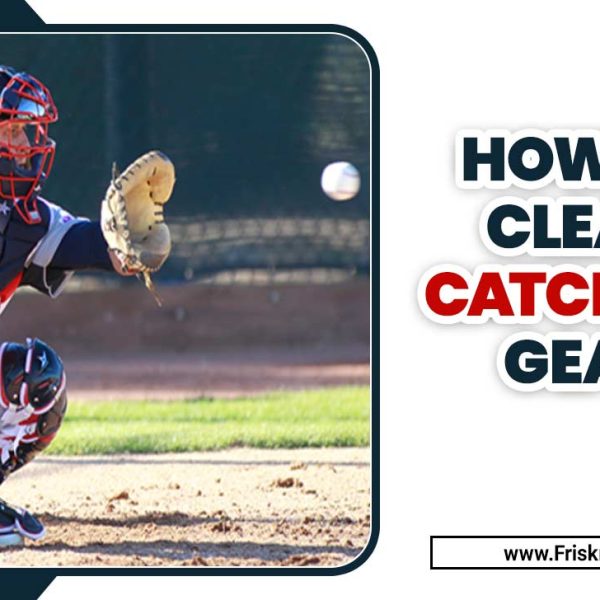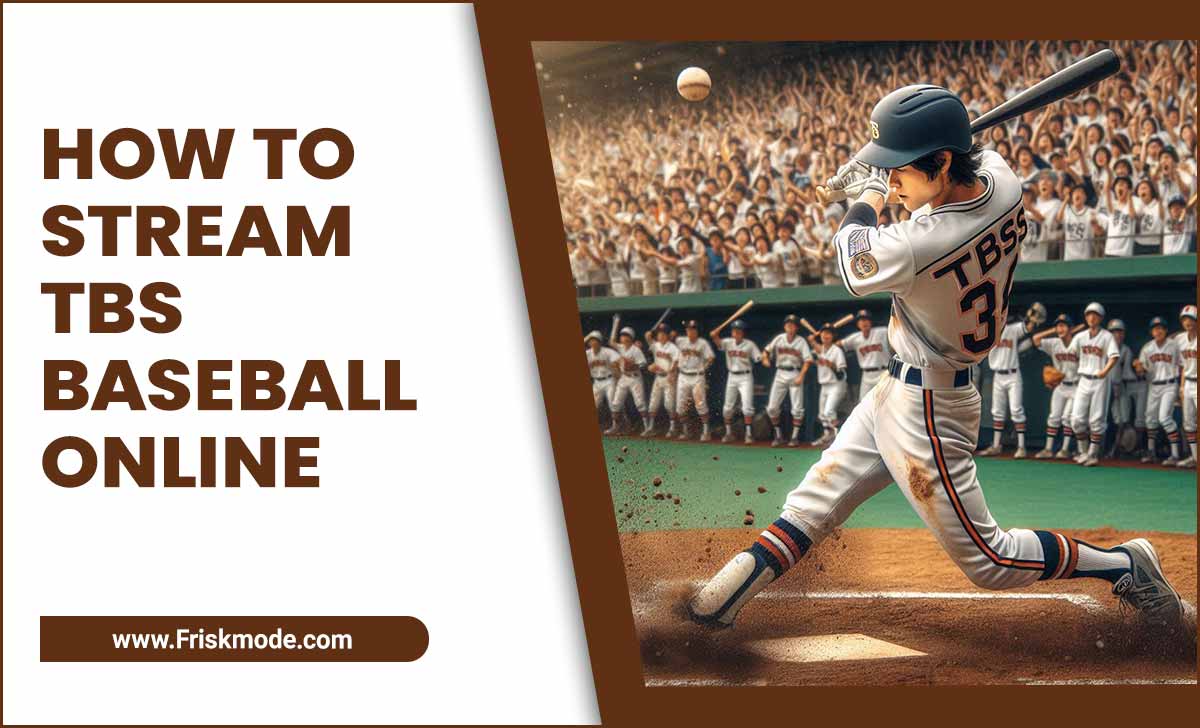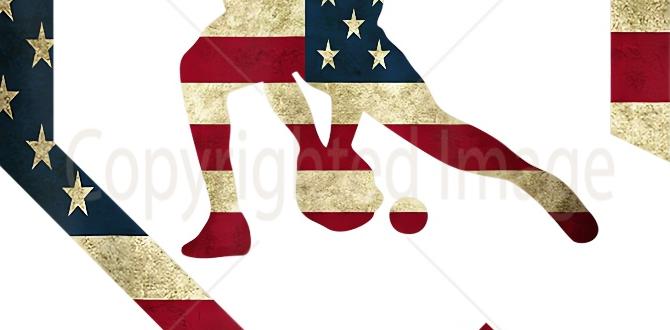Quick Summary: Catchers shin guards and umpire gear, while both protecting legs, serve distinct purposes. Catchers’ gear is designed for a player in action, offering specific flexibility and protection against wild pitches and foul balls. Umpire gear prioritizes comprehensive coverage and stability for stationary officials. Understanding the differences ensures you choose the right protection for your role on the field.
Ever found yourself scratching your head over all the different types of leg protection out there for baseball? It’s totally understandable! You see players wearing padded leg guards, and then there’s that other gear umpires put on. Are they the same? Do they do the same job? If you’re a player, coach, or even just a curious fan, figuring out the difference between catchers’ shin guards and umpire gear can feel like a puzzle. But don’t worry, it’s simpler than it looks! We’re here to break it all down so you can know exactly what you need for the diamond. Let’s get protective!
Catchers Shin Guards vs. Umpire Gear: What’s the Real Difference?
“Catchers shin guards vs umpire gear” might sound like a showdown, but it’s really about understanding unique needs on the baseball field. Both protect the legs, but they’re built for very different jobs. Think of it like this: a catcher is an active player, constantly moving, blocking pitches, and needing to react quickly. An umpire, on the other hand, stands in a specific spot for extended periods, needing durable, static protection. This fundamental difference dictates how each piece of gear is designed.
The Catcher’s Role: Agility Meets Protection
Catchers are the heart of the defense. They squat for hours, frame pitches, block errant balls, and deal with baserunners sliding into home. Their gear needs to allow for maximum movement and quick recovery. Catchers’ shin guards are a crucial part of their protective ensemble. They are designed to:
- Absorb Impact: Protect against foul tips straight down, wild pitches that get past the glove, and collisions at home plate from aggressive baserunners.
- Allow Flexibility: They need to bend and flex with the catcher’s knees and ankles as they squat, stand, and move laterally to block.
- Provide Coverage: Guard the shins and knees, which are vulnerable to direct impact.
- Stay in Place: Secure straps ensure they don’t shift during play, maintaining consistent protection.
The focus for a catcher is on protection that doesn’t hinder their ability to play the game effectively. They need to be agile and responsive, and their gear must support that.
The Umpire’s Role: Stationary Vigilance
Umpires are the law on the field. Their job requires them to have an unobstructed view of the play, which means they stand in specific positions for long durations. While they aren’t actively fielding balls, they are in the direct path of the game’s action. Umpire gear, particularly shin guards, is built with these factors in mind:
- Maximum Coverage: Umpire shin guards are typically longer and wider, offering a broader shield against foul balls and line drives that might come their way.
- Durability: Designed for repeated, hard impacts over many games and seasons.
- Stability: While still allowing for some movement, the primary goal is a solid barrier. They don’t need the same level of dynamic flexibility as a catcher’s.
- Comfort for Long Periods: Since umpires stand for so long, the gear needs to be padded and supportive to reduce fatigue.
The umpire’s gear is about resilience and creating a solid barrier against potential hazards, without the need for rapid, dynamic movement of a player.
Deep Dive: Catchers Shin Guards
Catchers’ shin guards are specifically engineered to meet the unique demands of the position. They are usually a two-piece or three-piece construction, allowing for better articulation around the knee and shin. This design is critical for comfort and mobility.
Key Features of Catchers Shin Guards:
- Anatomical Design: Shaped to fit the contours of the shin and knee, offering a more personalized and protective fit.
- Padding Materials: Typically use high-density foam, plastic, and sometimes gel inserts to cushion impacts.
- Ventilation: Many modern shin guards have vents to help with airflow, keeping the catcher cooler during long games.
- Adjustable Straps: Velcro or buckle straps allow for a secure, customized fit that doesn’t slide down.
- Toe Protection: Many models include built-in toe caps or extend protection down to the top of the foot.
- Lightweight Construction: While protective, manufacturers aim to keep them as light as possible to prevent fatigue.
When selecting catchers shin guards, a player needs to consider their size, the level of play, and personal preference for flexibility versus rigidity. A good fit is paramount for both protection and performance.
The Anatomy of a Catcher’s Shin Guard:
Let’s break down the parts you’ll find:
1. Knee Cap: A prominent, usually plastic, piece designed to cover the kneecap. It often extends to protect the front of the knee joint.
2. Shin Plate: The main protective area covering the shin bone. This is where most of the impact absorption happens.
3. Ankle/Foot Guard: Some shin guards extend down to cover the ankle and the top of the foot, offering protection against foul balls that sneak by.
4. Straps: Usually three or four adjustable straps (often Velcro) that secure the guard to the leg.
5. Lining/Padding: The inner materials that cushion the leg and provide comfort.
Deep Dive: Umpire Gear
Umpire leg protection, often referred to as umpire shin guards or leg guards, is built with a different philosophy. The emphasis is on creating a robust, immovable barrier that covers a larger area of the leg.
Key Features of Umpire Gear:
- Extended Length and Width: Designed to cover from the foot all the way up to the knee and even slightly above, offering more comprehensive protection.
- Rigid Construction: Often made with hard plastic shells and substantial padding to withstand powerful impacts.
- Fixed Padding: Unlike some catcher’s gear, the padding might be more integrated and less flexible, prioritizing protection over dynamic movement.
- Durable Strapping Systems: Usually employ strong straps, often with buckles, to ensure the gear stays firmly in place with minimal adjustment needed throughout a game.
- Comfort for Long Wear: Despite their rigidity, they are engineered for comfort during extended periods of standing.
Umpires need gear that is reliable and can take a beating, game after game, behind the plate or on the bases. The materials and construction reflect this need for durability and consistent protection.
The Anatomy of Umpire Gear:
Umpire leg protection has a similar goal but different emphasis:
1. Full Leg Coverage: Extends from the toe area up to above the knee to protect the entire lower leg.
2. Hard Shell Exterior: Typically a very durable plastic or composite material that acts as the primary impact barrier.
3. Thick, Dense Padding: A substantial layer of foam or other shock-absorbing material inside the shell.
4. Secure Fastening System: Straps, often buckle-based, designed for a very secure and long-lasting fit without needing constant re-adjustment.
5. Optional Toe Extension: Some models include an integrated or removable toe guard for even more protection.
Catchers Shin Guards Vs. Umpire Gear: A Comparative Look
To get a clearer picture, let’s stack them up side-by-side. This comparison highlights why you wouldn’t want to swap these pieces of gear between roles.
| Feature | Catchers Shin Guards | Umpire Gear |
|---|---|---|
| Primary Purpose | Player agility and protection during active play (blocking, squatting) | Stationary, comprehensive protection against direct impacts |
| Flexibility | High; designed for knee and ankle articulation | Lower; prioritizes rigidity and stable coverage |
| Coverage Area | Shin and knee, often with some foot protection | Full lower leg, from foot to mid-thigh |
| Construction | Often multi-piece for better fit and movement | Typically single, rigid shell with integrated padding |
| Weight | Generally lighter to reduce fatigue during movement | Can be heavier due to larger size and more robust materials |
| Strapping | Adjustable Velcro for secure, dynamic fit | Robust straps, often buckle-based, for maximum stability |
| Impact Resistance | Designed for quick, sharp impacts (foul tips) | Designed for sustained, direct impacts |
Pros and Cons of Each:
Catchers Shin Guards:
Pros:
- Excellent mobility and flexibility.
- Engineered for the fast-paced demands of catching.
- Lighter weight, reducing player fatigue.
- Better fit for various leg shapes through multi-piece designs.
Cons:
- May not offer as much broad coverage as umpire gear.
- Can shift slightly if not secured perfectly.
- Less rigid, which might be preferred by some, but can be a con for pure impact resistance.
Umpire Gear:
Pros:
- Superior, comprehensive leg protection.
- Unmatched durability for long-term use.
- Stays firmly in place, offering consistent safety.
- Excellent for protecting against powerful, direct hits.
Cons:
- Significantly less flexible, hindering quick movements.
- Can be heavier and lead to increased fatigue if used by a player.
- Bulkier design might not be ideal for a player needing to move rapidly.
Why You Shouldn’t Mix Them Up
The core reason is safety and performance. Wearing umpire gear as a catcher would severely restrict movement, leading to slower reactions, difficulty blocking pitches, and an increased risk of awkward falls or injuries. Imagine trying to pivot or get into a squat with bulky, rigid leg guards – it’s not practical.
On the flip side, a player wearing only catcher’s shin guards while umpiring would be at a much higher risk. The limited coverage means a sharp foul ball or errant throw could easily hit exposed areas of the leg, leading to serious injury. Umpires need that full shield of protection because they are stationary targets in the line of fire.
It’s also worth noting that the materials and design consider different wear patterns. Catchers might slide or get into various positions that put stress on seams and straps, while umpires value a system that remains secure and intact for hours on end.
Choosing the Right Gear for Your Role
When it comes to baseball equipment, suitability is key. You wouldn’t use a tennis racket to play golf, and the same principle applies here.
For the Catcher:
Prioritize shin guards that:
- Fit snugly and comfortably without pinching or rubbing.
- Allow full range of motion in the knees and ankles.
- Offer a good balance of protection and weight.
- Cover the shin, knee, and optionally the foot adequately.
Brands like USA Baseball and major sporting goods manufacturers offer a wide range of catcher’s gear tailored to different age groups and skill levels. Always try them on if possible!
For the Umpire:
Umpire leg protection should:
- Provide maximum coverage from toe to knee (or higher).
- Be extremely durable and robust.
- Offer a secure, non-slip fit that stays put.
- Be comfortable enough for standing for extended periods.
Official sports umpire associations and reputable equipment suppliers are excellent resources for finding gear built specifically for the rigors of umpiring. Check out resources from organizations like the Umpire Empire for guidance on official gear.
Maintenance and Care
No matter which type of leg protection you use, proper care will extend its lifespan and maintain its effectiveness.
For Catchers Shin Guards:
- Cleaning: Wipe down with a damp cloth and mild soap after use. Ensure they are completely dry before storing to prevent mold or mildew.
- Drying: Never put them in a dryer. Air dry them away from direct heat.
- Storage: Store in a cool, dry place, ideally in a gear bag designed for catcher’s equipment.
- Inspection: Regularly check straps for wear and tear, and inspect padding for damage after impacts.
For Umpire Gear:
- Cleaning: Similar to catcher’s gear, wipe down with a damp cloth. For tougher dirt, use a mild cleaning solution.
- Drying: Air dry thoroughly. Moisture can degrade protective materials over time.
- Storage: Store in a safe place where they won’t be crushed or damaged. Some umpires use specialized umpire gear bags.
- Inspection: Check for cracks in the shell, loose straps, or worn padding. Due to their rigid nature, check for stress fractures after hard impacts.
Proper maintenance ensures that your gear continues to offer the best protection and lasts longer, saving you money and keeping you safe on the field.
Frequently Asked Questions (FAQs)
Q1: Can a catcher wear umpire shin guards?
A: No, it’s not recommended. Umpire gear is too stiff and bulky, severely limiting a catcher’s mobility, which is crucial for their role.
Q2: Can an umpire wear catcher’s shin guards?
A: While they might offer some protection, catcher’s shin guards don’t provide the extensive coverage needed for umpires, leaving them vulnerable.
Q3: Are catcher’s shin guards and baseball pants the same?
A: No, catcher’s shin guards are a separate piece of protective equipment worn over or under baseball pants, designed to protect the shins and knees. Baseball pants are the standard uniform trousers.
Q4: How do I know if my shin guards fit correctly?
A: They should feel snug but not tight, with no significant gaps. When you bend your knee, the guard should move with your leg and not slip down. The knee cap piece should align with your kneecap.
Q5: What’s the difference between youth and adult shin guards?
A: Youth shin guards are typically smaller, lighter, and designed for developing bodies. Adult gear is larger, offers more coverage, and is built to withstand harder impacts from more powerful players.
Q6: Do shin guards affect my ability to block pitches?
A: Properly fitting catcher’s shin guards should enhance your ability to block by providing confidence and protection, without hindering your movement required to get in front of the ball.
Q7: How often should I replace my shin guards?
A: This depends on usage and material wear. Inspect them regularly for cracks, tears, or worn padding. If they no longer feel secure or protective, it’s time for a replacement, generally after a few seasons of heavy use.
Conclusion
So, there you have it! While both catchers shin guards and umpire gear are essential pieces of baseball protection, their designs and purposes are quite distinct. Catchers need mobility and flexible defense tuned for their active role, while umpires require robust, unwavering coverage for their stationary, but equally critical, position. Understanding these differences ensures that players and officials alike are equipped with the right gear for safety, performance, and enjoyment of the game. Choosing wisely means staying protected and playing your best, whether you’re behind the plate as a catcher or calling balls and strikes as an umpire. Keep that gear in top shape, and you’ll be ready for whatever the game throws your way!




